Unifying Products and Workflows to Improve Customer Experience
Lutron's digital ecosystem had become fragmented over time, with disparate tools, siloed data, and complex workflows creating friction for residential and commercial customers. To enhance the customer experience, we led an initiative to unify these systems, streamline operations, and develop a scalable platform that would empower users to manage projects more efficiently.
My Role
- Workshop Facilitation
- Product Strategy
- Design Leadership
Team
- Business Partners
- Product Managers
- UX Researcher
- UX/UI Designers
Duration
- 16 Months
Facilitating Cross-Functional Collaboration
Understanding friction in the customer experience was at the heart of our approach. Through cross-functional collaboration, we brought together teams from product, sales, engineering, and customer experience to uncover key pain points and identify opportunities for improvement.
Identifying Customer Friction & Building Consensus
To build a unified and efficient digital experience, we first needed to deeply understand the challenges faced by Lutron's customers. Through weekly cross-functional workshops, we mapped the end-to-end customer journey, identifying pain points, workflow inefficiencies, and operational bottlenecks that created frustration for residential and commercial customers.
Enabling Strategic Initiatives Across the Organization
The findings from our discovery work extended far beyond product development, they informed broader company-wide strategic initiatives. By surfacing inefficiencies and disconnects across multiple teams, we helped drive operational improvements that reduced internal friction, enhanced collaboration, and created a more cohesive ecosystem for both employees and customers.
Storyboarding with Continuous Customer Feedback
To ensure our solutions addressed real user needs, we followed a design thinking approach that combined rapid prototyping with continuous customer feedback. We used storyboards and low-fidelity sketches to ideate, test, and validate concepts early, refining designs based on real-world input. This iterative process enabled quick validation, active user engagement, and real-time adjustments to improve outcomes.
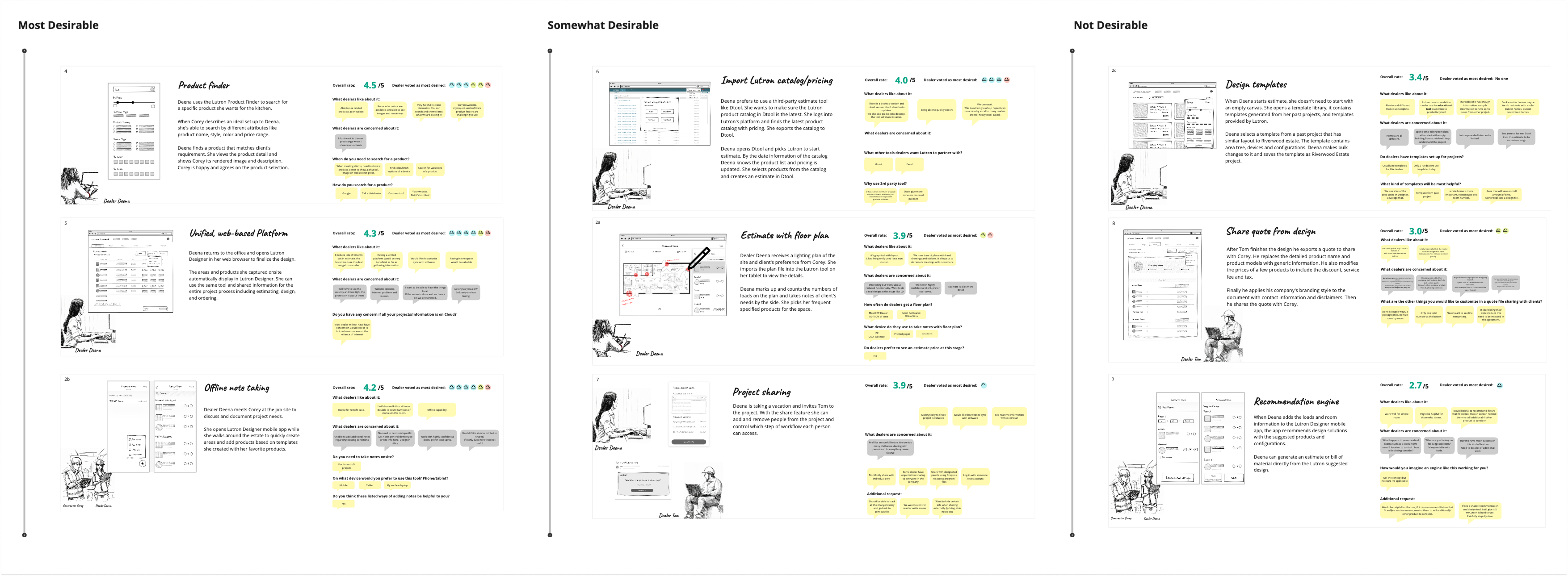
Evaluating Build vs. Buy Scenarios
As our solutions took shape, business leaders faced a key decision: invest in proprietary technology or integrate off-the-shelf solutions. We modeled multiple scenarios, helping stakeholders determine where to build for innovation and differentiation, where to buy for rapid deployment and efficiency, and where to integrate to balance cost-effectiveness with tailored functionality.
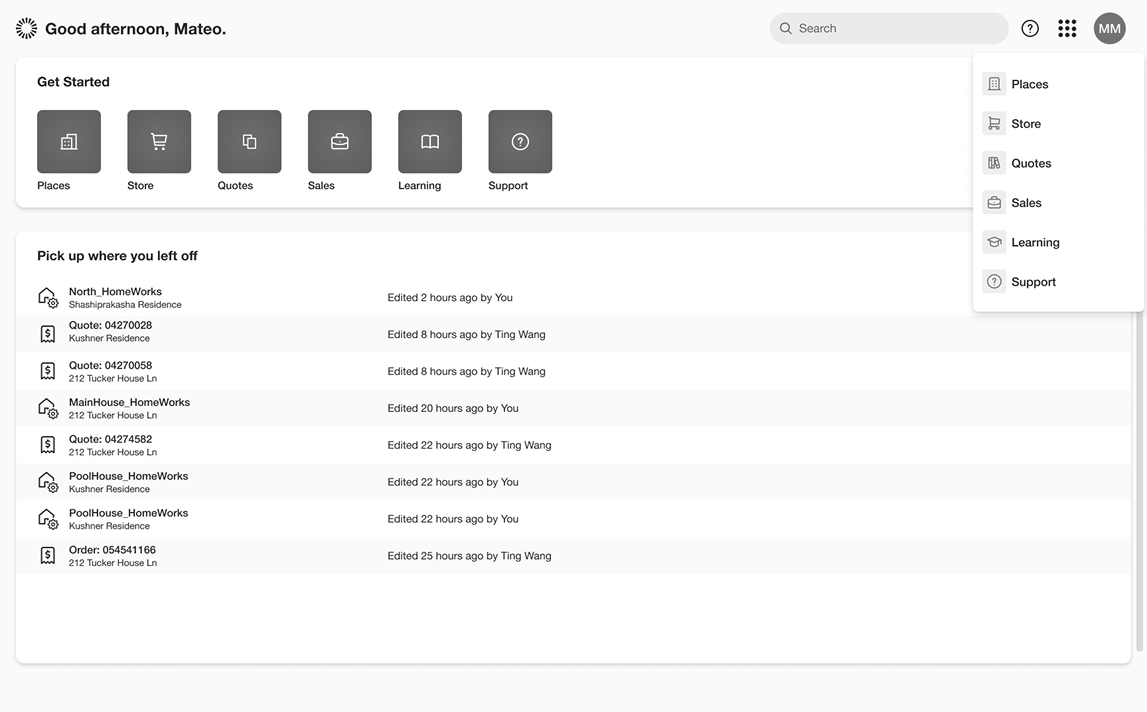
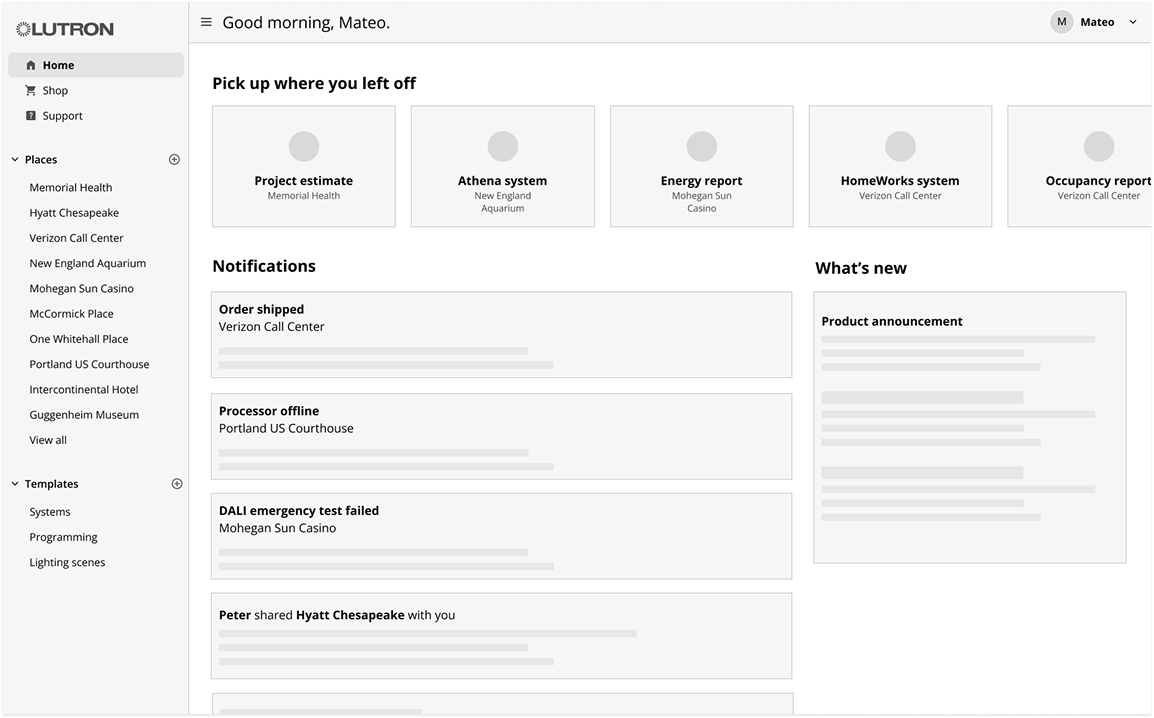
Executing a Build-and-Buy Strategy
To bring our strategy to life, we structured execution across three key workstreams, each requiring tailored UX design and research support to ensure seamless integration, usability, and scalability. My role involved providing strategic guidance and oversight, aligning teams with business goals, and ensuring key insights from discovery carried through to implementation.
Team 1: Salesforce Implementation
Enable a frictionless estimate and ordering experience.
This team focused on establishing Salesforce Commerce as a scalable digital foundation, leveraging insights from discovery workshops to optimize workflows. I collaborated closely with designers and researchers to map Jobs-to-Be-Done, refine purchasing flows, and enhance navigation, search, and checkout. By fostering a user-centered approach and supporting the team, I helped drive design decisions that balanced customer insights with business objectives while maintaining a seamless execution strategy.
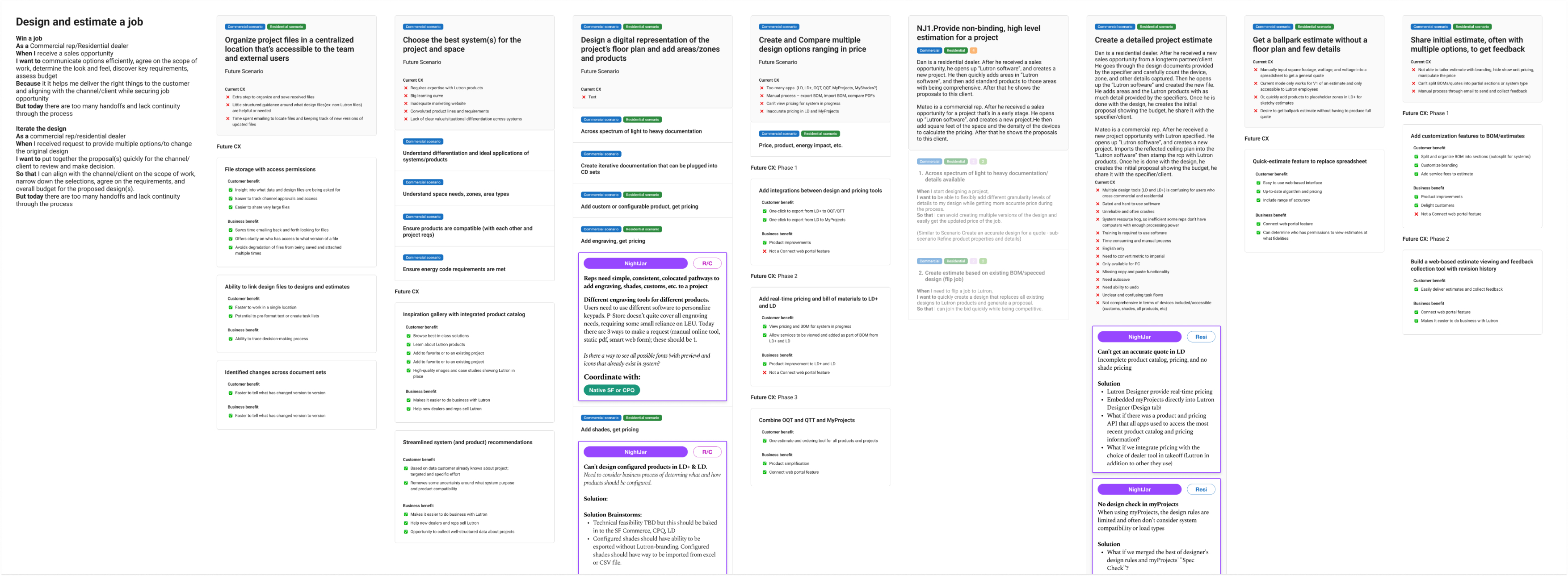
Team 2: Custom Integrations
Bridge legacy systems with Salesforce Commerce CPQ.
This team focused on ensuring seamless interoperability between existing tools and the new Salesforce platform, enabling users to work efficiently across both environments. Leveraging cross-platform workflow mapping, we identified key integration points and optimized handoff processes to reduce friction. I collaborated with designers and engineers to refine these workflows, ensuring a cohesive experience that minimized disruption while enhancing productivity. By maintaining a user-centered approach, we aligned integration efforts with real-world needs, creating a more intuitive and efficient system for dealers and sales teams.
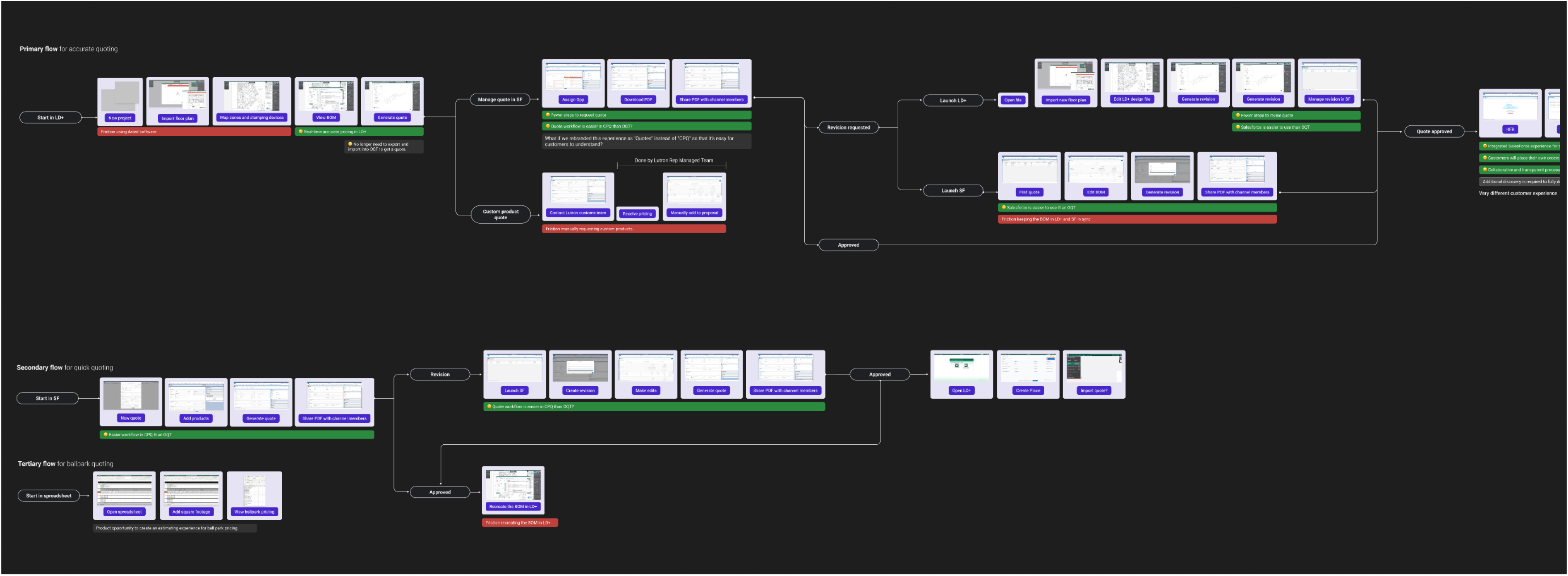
Team 3: Platform Team
Design a unified product experience with seamless navigation.
This team focused on building Lutron Connect, a centralized platform that unified applications for seamless access. Leveraging a scalable navigation model, we streamlined the user experience while ensuring consistency across tools. I collaborated with designers and stakeholders to align a phased deprecation roadmap, balancing the integration of new functionality with the need for business continuity. Through continuous usability testing, we refined the platform to ensure a smooth transition, making it easier for users to navigate and adopt the new system without disruption.

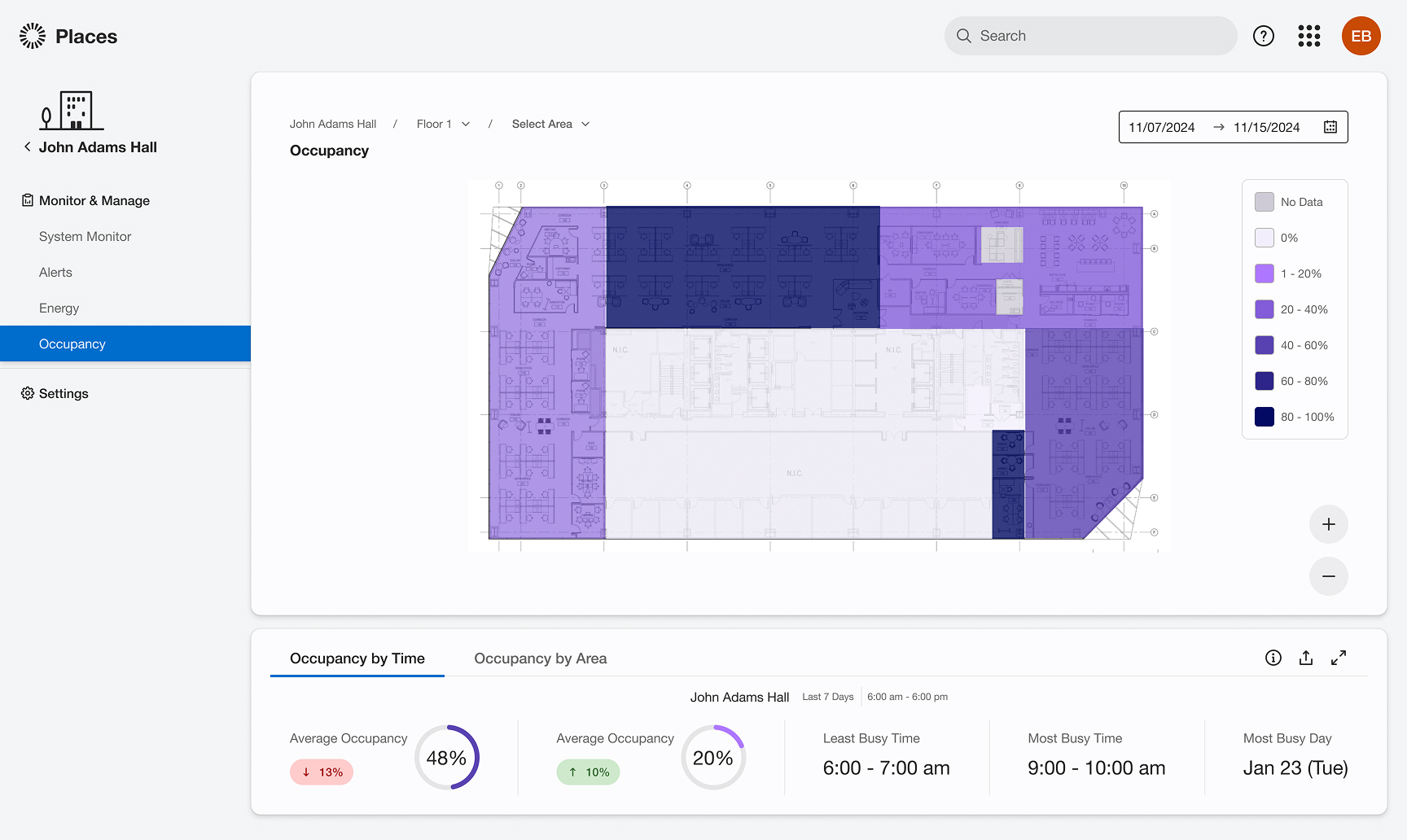
Illuminating the Future of Lighting Control
Reduced Operating Costs
Streamlined operations through Salesforce Commerce integration, workflow automation, and product consolidation, cutting annual operating costs by an estimated $60K.
Increased Customer Satisfaction
Boosted customer satisfaction scores by an estimated 20-25% through streamlined workflows and an intuitive platform, enabling faster, more accurate client solutions.
Streamlined Customer Workflows
Enabled Lutron's customers to complete their projects 30-40% more efficiently, allowing them to deliver solutions to their clients faster and with greater precision.
Cultural Transformation
Fostered a customer-first mindset across Lutron, influencing teams throughout the organization to prioritize user needs in their decision-making processes.
